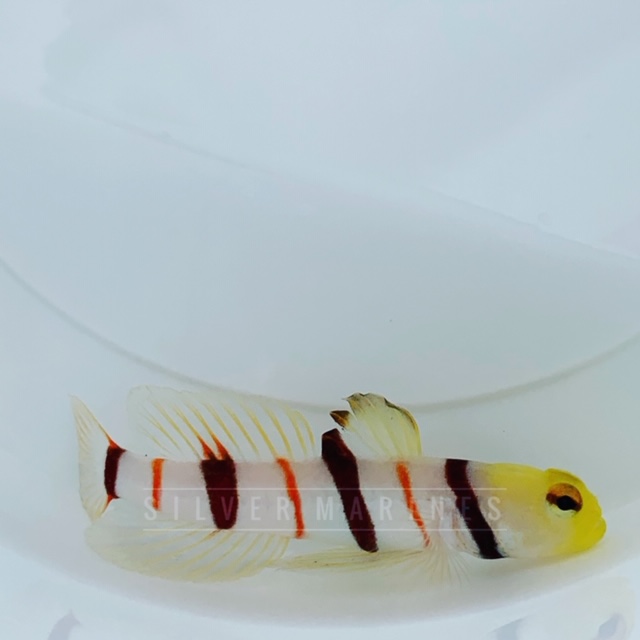
 Click for Larger
Photo
Click for Larger
Photo
|
|
Dracula Goby Product Description
okokThe Dracula Goby is prized for its unusual and beautiful, stark coloration. Its body is a pure white color rarely seen in the aquarium hobby. But it is the thick bands of deep oxblood red, alternated with thinner stripes of reddish-orange, that place Stonogobiops dracula in a class of elegance wholly its own.Native to the relatively shallow reefs of the Maldives, wild specimens of the Dracula Goby inhabit open sand areas dotted with rubble near the base of reef structures. In the home aquarium, the Dracula Goby does best when housed in similar habitats. Like other Shrimp Gobies in the Gobiidae family, the Dracula Goby digs shallow burrows in sandy substrate and seldom strays far from its claimed territory. Instead, most prefer to perch on the sand just outside or hover in the water column directly above the burrow entrance.
While poised outside its burrow, the Dracula Goby keeps a watchful eye for both predators and prey. If a larger or aggressive fish approaches, the Dracula Goby will dart back into its burrow to hide. If prey is found floating in the water column, however, Stonogobiops dracula will quickly burst upwards and snatch it before returning almost directly to the mouth of its burrow.
Another characteristic the Dracula Goby share with other Shrimp Gobies, is that the Dracula Goby will also pair with pistol shrimp. Most seem to prefer Alpheus randalli as their burrowmate. However, to best promote this symbiotic relationship, both the Dracula Goby and its hopeful pistol shrimp counterpart should be introduced into the aquarium at the same time. Though peaceful, the Dracula Goby will sometimes spar with similar species, or more aggressive fish of similar size to defend its territory. However, most live peacefully with almost any non-predatory fish in a suitable sized aquarium of at least 10 gallons.
Feed these carnivores a varied diet of mysis shrimp and other frozen meaty foods, and suitable phytoplankton and flake foods. Most gobies do best when fed multiple small meals throughout the day. To best recreate natural feeding conditions, it is best to place the food in the outflow of a water pump or wavemaker so it actively disperses into the water column.
Approximate Size: 1-1/2" to 2-1/2"
HOME - About PetsGlobal.com - Pet Industry Links - Update my company - Contact PetsGlobal.com
© 2001-2024 PetsGlobal.com All right reserved